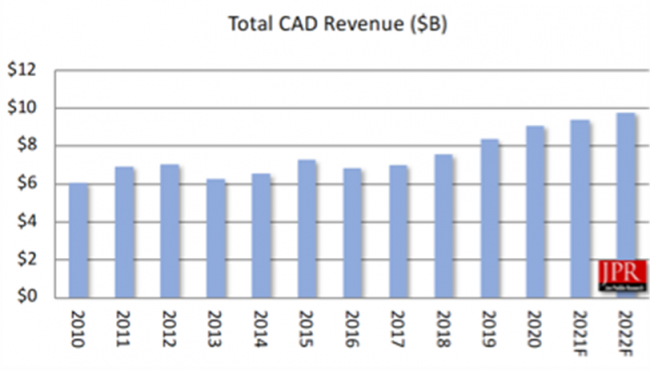Early versions of CAD (computer-aided design) were heavily focused on drawings for manufacturing. When combined with finite element analysis and CAM (computer-aided machining) software, the output of the drawings could be confirmed for structural viability and sent to a CNC (computer numerical controlled) machine for automated processing. Eventually, the CAM acronym grew into computer-aided manufacturing to cover more than machining parts to full assembly and even robotic handling from raw stock to finished product.
The development of CAD can be traced to work by Patrick Hanratty and Ivan Sutherland in the 1950-70 timeframe. At that time, most computers were still room-sized and very expensive. Major manufacturing companies, the Ford, GM, Lockheed sized companies, could afford the computer power needed to do rudimentary CAD for CAM applications. Then came the mini-computers like DEC VAX, IBM System 34, and the SUN workstation. Power came up, prices came down, and CAD found its legs.
From the earliest CAD software commercially available, Sketchpad developed by Ivan Sutherland, to the PC graphics revolution that spawned present day market leaders like AutoCAD, Bentley Systems, Dassault, and PTC, CAD has found a home in the AEC—architecture, engineering, and construction—community.
According to JPR (Jon Peddie Research), the CAD market’s growth is a leading indicator of expansion for many market segments and infrastructure as companies update and acquire software licenses to prepare for upcoming projects. Accordingly, JPR’s estimates, the CAD industry earned $9.4 billion in revenue in 2021 compared to $8.8 billion in 2020. The AEC industry achieved a (CAGR (compounded annual growth rate) of 9%. JPR put the number of CAD users at 7.31 million in 2021.
Why AEC CAD? Design changes are often required due to the owner’s preferences or material changes. CAD software offers tremendous flexibility to designers to make necessary changes or modifications. Revisions can be made simply and easily without redrawing the plans while with hand drafting, to make any changes, drafters have no alternative but to go back to the drawing board and start again.

High revenues and a large user base mean the CAD market influences hardware design for PCs, graphics hardware, servers, and even mobile devices. Combined with the focus on digitalization in the industry, the CAD market is stronger than ever. In fact, it might be correct to say the arrival of CAD along with standardized network protocols signaled the birth of digitalization for design and engineering back in the 1980s. The fulfillment of digitalization’s promise is taking shape now with the introduction and inclusion of digital twins.
The market is transitioning from packaged software tools to building systems to support projects from conceptualization to implementation. Frequently, customers opt for integrated products from the same vendors to build their systems, but they quickly find they need more than one supplier. No one vendor does it all, though they aspire to develop more comprehensive offerings. Customers now have the upper hand and are pressuring suppliers to ensure software tools from different companies are compatible.
Want to tweet about this article? Use hashtags #construction #sustainability #cloud #edge #futureofwork #infrastructure


